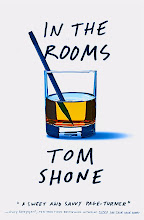skip to main |
skip to sidebar
Far from the bright centre of the universe
One of my favorite pieces of writing about Star Wars, which celebrates its 35th anniversary today:—
'In the summer of 1977, I saw "Star Wars" twenty-one times, mostly by myself. I was thirteen—that kid alone in the ticket line, slipping past ushers who'd begun to recognize me, impatient to get to my favorite seat. All twenty-one viewings took place at the Loews Astor Plaza at Forty-fourth Street, just off Times Square. The Astor Plaza was a low, deep-stretched hall with a massive screen and state-of-the-art sound, newly enough renovated to be free of the soda-rotted carpet that was a feature of New York theatres in those days. I associated the theatre with the Death Star; getting into it always felt like an accomplishment.'
My own thoughts on seeing the film as a kid in Cornwall here:—
'... to the average 10-year-old, there was only one only thing that could possibly be cooler than the thought of owning your own spaceship. And that was the thought of owning your own spaceship for such a length of time that it had broken down on you repeatedly, reaching the same level of fond decrepitude into which people let their cars sink. “What a piece of junk!” exclaims Luke. “She may not look like much,” replies Han Solo, “but she’s got it where it counts, kid”— an exchange of dialogue that provides such a neat encapsulation of critical opinion on the film that you wonder why critics in 1977 didn’t simply put their feet up and leave the film to itself. For junk is everywhere in Star Wars. It fills its characters’ garages and homes, their spaceships and speeders. One race of creatures trades exclusively in junk: when R2 D2 and C3PO land on Tatooine, they fall into the hands of Jawas, small feral creatures who drive around the planet in a big mobile rag-and-bone shop for robots, stopping every now and again to hold a garage sale, which is how Luke comes to buy the droids — as junk. The Star Wars universe, in other words, seems to run on roughly the same principle as a New York thrift store, except with less in the way of woolly hats and more in the way of laser cannons. The only piece of new technology on display is, of course, the Death Star, which disposes of its junk in a big garbage masher, and into which Luke and his merry band naturally fall, like seeking like. That the Empire are the only people in the universe who haven’t yet heard of recycling is enough to mark them out at the bad guys. The good guys don’t buy off the peg; they tinker and solder, retrofit and weld. They are to be found in their garages, souping up their landspeeders, or up to their necks in the wiring of the Millennium Falcon. As Han Solo says proudly, “I made a few modifications to her myself.”
Everything points back, in other words, to Lucas’s most formative experience — souping up his Fiat Bianchina in his garage — and forwards towards his defining aesthetic as a filmmaker. For Star Wars, as many critics have pointed out, is itself junk — quite literally so. It is made up from the spare parts of other movies — offcuts of western, snippets of swashbuckler, and scraps of dialogue well past their sell-by date. “You can type this shit George, but you sure as hell can’t say it,” complained Harrison Ford — the only real actor in there, who further embarrassed proceedings by giving the only real performance, in which his disdain for the goings on is palpable: the sequels would fight hard to keep him and Luke separated, as if sensing that Luke’s ascent up the Jedi pole would never withstand Ford’s powers of sarcasm. But then Star Wars was never really about good acting, any more than the Road Runner cartoons were about the detailed delineation of beaks. A film which avoids close-ups like an introvert avoiding eye contact at a party, it is a movie consumed with motion blur and escape velocity, forward thrust and back blast. That’s all the Force was, really, once you had stripped it of some of the more mystical mumbo-jumbo in which Lucas wrapped it: that feeling you get when you’re driving so fast and well that you feel you’ve merged with your car, no longer really conscious of the decisions that you’re making, but thinking through the car’s fenders and chassis. If you’ve ever gone into the Zone while playing a video game, its much the same feeling. Star Wars is junk but it is fast junk. It’s got it where it counts.'























No comments:
Post a Comment